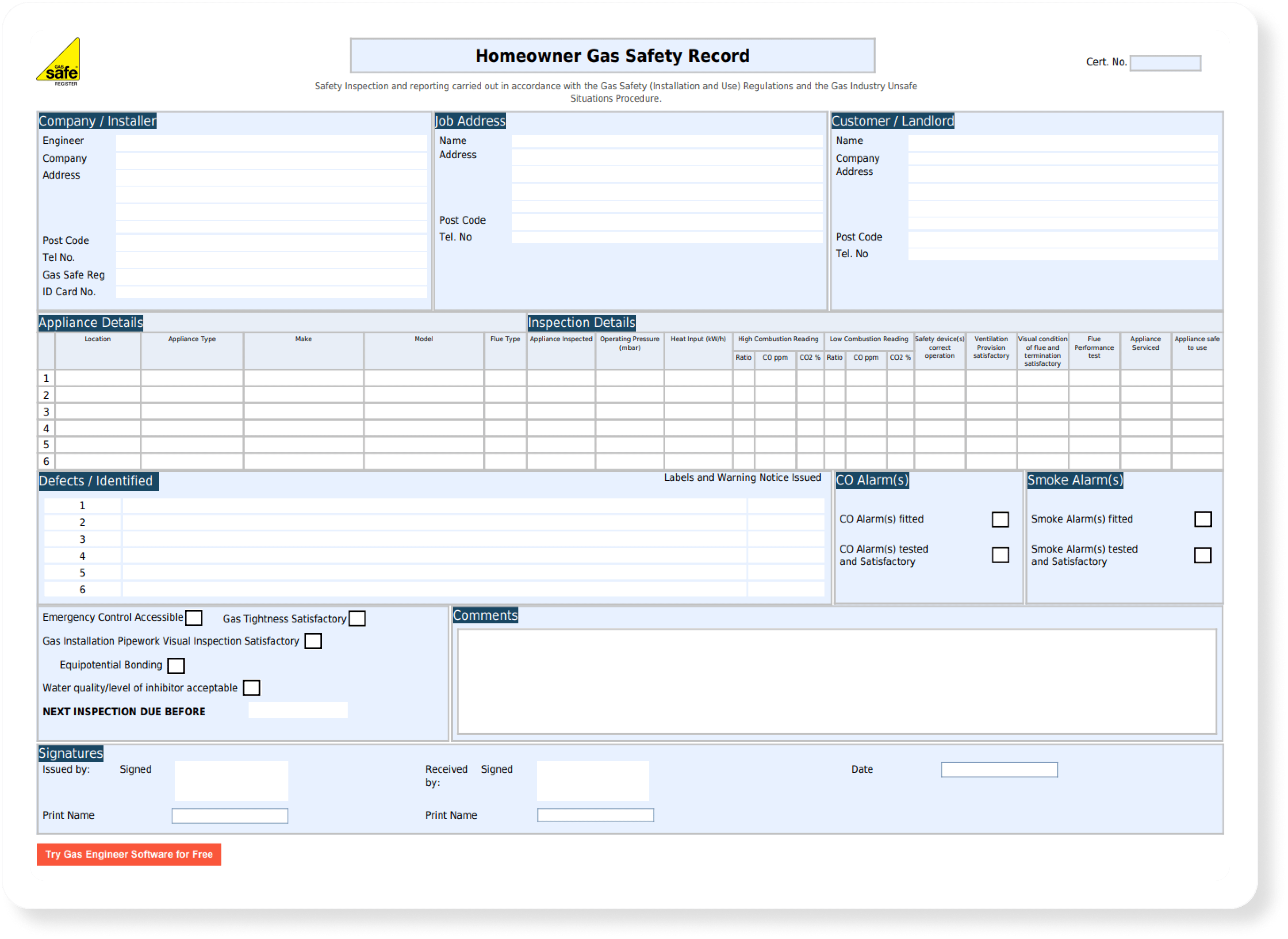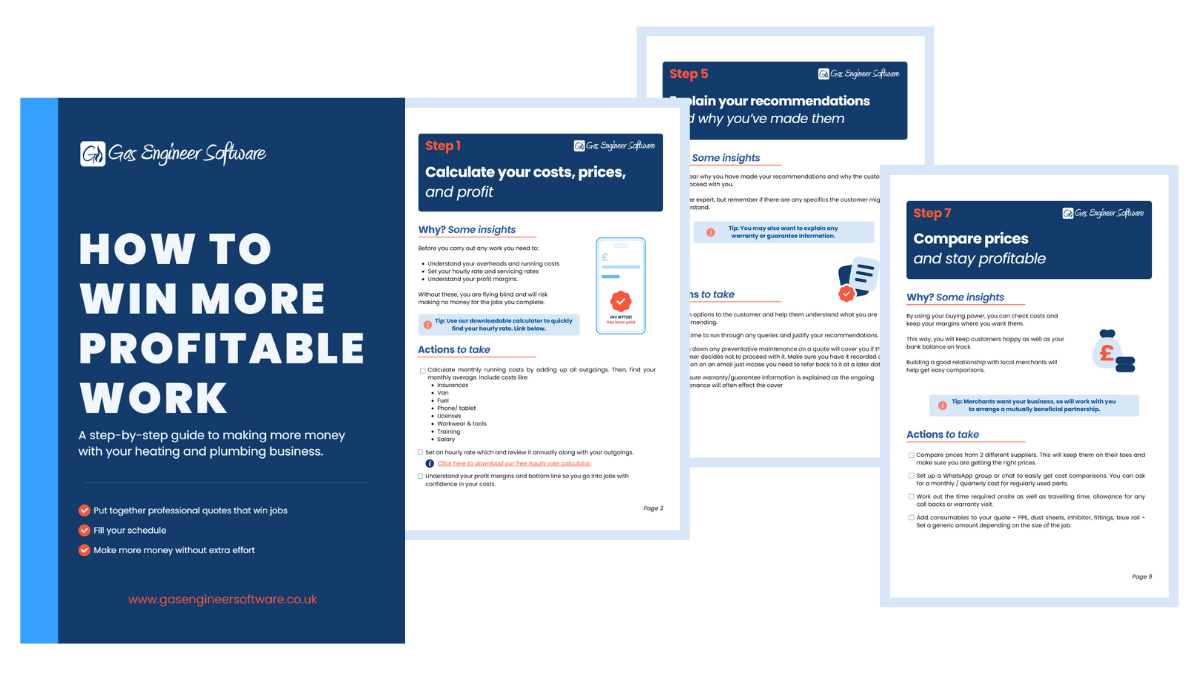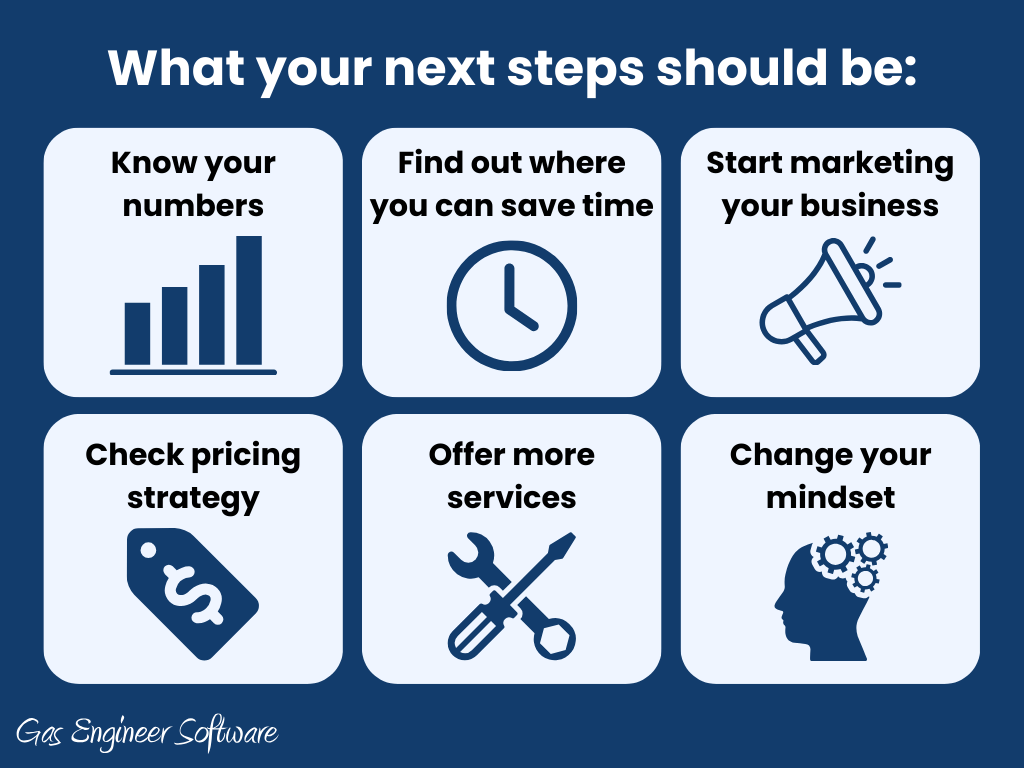Stuck In A Routine? Here’s How To Grow Your Heating Business
![[Featured Image] Stuck in a routine](https://gasengineersoftware.co.uk/wp-content/uploads/2024/02/Featured-Image-Stuck-in-a-routine.png)
Some people want a steady business. They don’t want to bother with the extra work that comes with scaling up a business and they’d rather spend their time on the tools doing what they enjoy – and that’s totally fine.
But for others, this can feel like being stuck in an endless cycle. No growth, no ambition, and no progress.
Goals are important to have. Whether that be making more money to support your family, a business that grows and grows until it can sustain itself without your involvement, or just the satisfaction of “success” in your eyes.
As your business grows, you’ll constantly encounter new challenges. We often see companies that grow fast but then ‘hit a ceiling’.
The good news is that it’s never too late to apply new strategies and workflows to overcome these challenges and grow your business.
Signs your business is stagnating
- You’re not finding many new customers. Most of your work is coming from existing customers, and new faces are few and far between.
- There’s no growth in profit. You’re making a living – which is good – but despite efforts to grow the business your profits stay the same.
- You’re worried about small costs. Business owners that want to boost their profits but aren’t finding any growth are often overly-concerned with cutting costs.
- You can’t ever seem to justify hiring a new employee. You know you need more engineers & admin staff to get more work done and earn more money. But you can’t quite reach that point where you can financially make that jump.
- You’ve got no real systems or workflow in place. Without a proper job management system, marketing, and so on, it can be difficult to grow beyond a certain point.
- You don’t spend much if any time marketing your services. Finding new customers is necessary if you want to grow your business beyond what word-of-mouth can do.
- You’re stuck in a rut doing the same thing day in, day out. You want to experiment with new services and do other things for your business, but between doing jobs, paperwork, and admin, you’ve got no time left.
What your next steps should be
#1 Make sure you know your numbers
Do you know your businesses monthly revenue and expenses? Do you know how much money you’re putting into marketing, and how many leads you’re getting from each strategy? What about the number of quotes you sent off, how many were accepted, and how many invoices have been paid?
These are all figures we talked about in our recent article. They’re hugely important to anyone that wants to analyse the health of their business and plan for its future. Creating a report with these numbers is a great place to start (if you haven’t already).
#2 Look at your business processes & find out where you can save time in your business
Most things in your business boil down to having enough time and money. You need time to market your business to find more jobs (and do those jobs), and you need money to invest in new engineers and new solutions.
Start by looking at your paperwork. From what we’ve seen as a software company specialising in job management, paperwork is the #1 source of wasted time and biggest frustration for tradespeople.
For example, those still doing things on paper could save hours each week by transitioning to an online solution where things are easier to organise and keep track of, and records/certificates are quicker to create and send to customers.
Other things to look at are:
- Your accounting process. Do you copy over all your numbers manually to your accounting software package (if you’re even using one!)
- Managing engineers. Do you spend lots of time creating job sheets to give out to your engineers? Do they have to come into the office at the start of each day to find out their schedules? Do they have an easy way to find out job details while on-the-go? Read our comparison between scheduling on software vs paper here.
- How you manage customer details. Are your customer details scattered all across your van/home/office? Do you and your team have a collective place to keep information? Consolidating all this saves time when customers call or when you need to go back and look at job notes, for example.
Most trades businesses can squeeze extra time out of their workflow if they take a step back and analyse where they spend most of their time. Note that this is not a complete list, and every business is different.
#3 Reinvest this extra time into marketing your business:
World-of-mouth has proven time and time again to be one of (if not the) best marketing strategies for tradespeople. But ultimately, those that want to grow their business can’t rely on it in isolation.
With all the extra time you can win back from your day, reinvest a good chunk of it into marketing. Read our guide here to get some starter tips.
Once more jobs start flowing in, you’ll have more money to experiment with new solutions, hire new staff, and expand your services.
#4 Re-evaluate your pricing strategy
Lots of gas engineers here in the UK undervalue their work. We wrote an article on pricing strategies that included some of the average rates gas engineers charge, broken down by job type and region.
The data is from all the jobs going through our software. It’s a fantastic resource if you want to easily see how your prices stack up to your local average.
Sometimes, however, it’s not simply a matter of underpricing. There are several different pricing strategies out there that can change the way your business finds customers.
For example, cost-plus pricing is a common technique used by tradespeople (whereby you calculate your costs and add a reasonable markup).
There’s also competitive pricing, value-based pricing, and many more. You could even experiment with offering discounts or special offers to capture more work – as long you’re still making a profit.
As a tradesperson, it’s easy to undervalue your services. Read our recent article where we talked to Luke Stanyer from Blue Bulldog Plumbing & Heating about valuing your own work.
#5 Expand your services
As you grow, there comes a point where the number of new customers shrinks.
At this point, you’ve got two main options: expand geographically into a wider or different area, or start offering new services.
The latter is usually the easier of the two options. Many gas engineers specialise in either installs or servicing. Do you do both?
There’s also the whole world of plumbing which many gas engineers tap into, as the two trades often go hand-in-hand.
If you’re down to learn something new, heat pumps are starting to become more and more of a hot topic. Booking yourself into a training course (which can be free thanks to government grants) allows you to cater to a new market. There is a huge overlap in skill set here, too.
We’ve also got a free Heat Pump Service Sheet template you can download here. It’s a free & fillable PDF document ready for use.
#6 Change your mindset
Your mindset as a business owner plays a huge role in its success and growth.
At its core, running a business is about offering a service your customers value and making money. If you’ve got employees, it’s your responsibility to make as much profit for their sake.
But at the same time, you need to make sure you’re delegating tasks to your team properly. As a business owner, you should have time to strategise, take calculated risks, and lead the overall direction of the business. If you’re a slave to your schedule and still on the tools, think about when you might want to take a small step back to focus on the bigger picture.
Unlock business growth with Gas Engineer Software
Growing a business is much easier when you have the infrastructure to allow it.
Gas Engineer Software offers a smarter way to work where all the stages of a job are seamlessly interconnected.
From quotes to invoices, certificates to customer relationship management, we make it so you can focus on the future of your business.
Next steps:
If you’ve been thinking about implementing software into your workflow to save time, here’s what you can do next:
- Visit our resources centre where you'll find more articles like this one and our free gas rate calculator.
- Start a free trial to see exactly how our software works for your business.
- Watch our video demo to get an idea of how our software works. You can also book a 1-on-1 session with our customer success team for a more personalised experience.
- Know an engineer who's still using paper? Help them and us out by sending our software their way!


